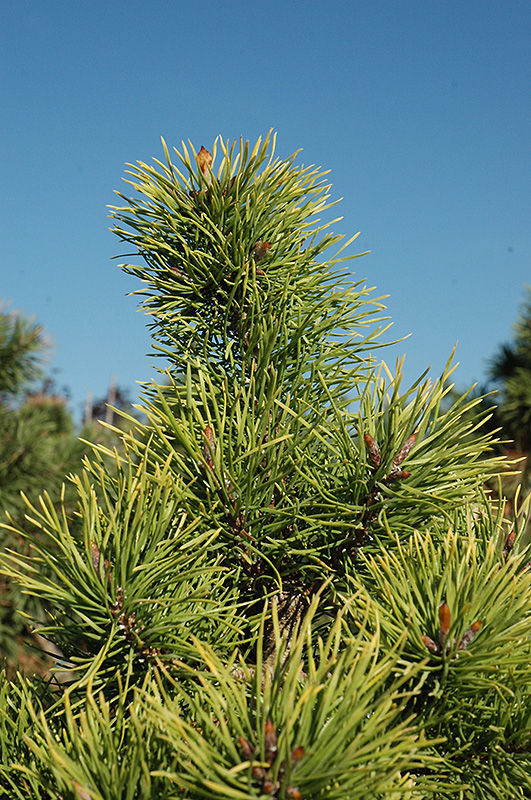Pine, (Lodgepole) Chief Joseph Pinus contorta 'Chief Joseph' Height: 12 feet Spread: 6 feet
Sunlight:
Hardiness Zone: 4b Description: This lovely dwarf pine is slow growing, pyrimidal and compact; most of the year the needles are colored green but in late fall and winter they turn to a spectacular gold; likes well drained soil and will shed some needles throughout summer Ornamental Features Pine, (Lodgepole) Chief Joseph is a dwarf conifer which is primarily valued in the landscape or garden for its distinctively pyramidal habit of growth. It has rich green evergreen foliage. The needles turn an outstanding gold in the fall, which persists throughout the winter. Landscape Attributes Pine, (Lodgepole) Chief Joseph is a dense multi-stemmed evergreen shrub with a distinctive and refined pyramidal form. Its relatively fine texture sets it apart from other landscape plants with less refined foliage. This is a relatively low maintenance shrub. When pruning is necessary, it is recommended to only trim back the new growth of the current season, other than to remove any dieback. It has no significant negative characteristics. Pine, (Lodgepole) Chief Joseph is recommended for the following landscape applications; Planting & Growing Pine, (Lodgepole) Chief Joseph will grow to be about 12 feet tall at maturity, with a spread of 6 feet. It tends to fill out right to the ground and therefore doesn't necessarily require facer plants in front, and is suitable for planting under power lines. It grows at a slow rate, and under ideal conditions can be expected to live for 40 years or more. This shrub should only be grown in full sunlight. It does best in average conditions that are neither too wet nor too dry, and is very intolerant of standing water. This plant should be periodically fertilized throughout the active growing season with a specially-formulated acidic fertilizer. It is not particular as to soil type or pH. It is highly tolerant of urban pollution and will even thrive in inner city environments. This is a selection of a native North American species. Special Attributes Evergreens need to be watered during the winter. Our desert climate especially in late winter to early spring evergreens can suffer during next growing season. An easy way to remember check for dryness on the holidays Halloween, Thanksgiving, New Year's Day, Valentines Day & Easter.![]()
![]()
![]()
![]()
![]()
![]()
![]()
![]()
![]()
![]()
![]()

